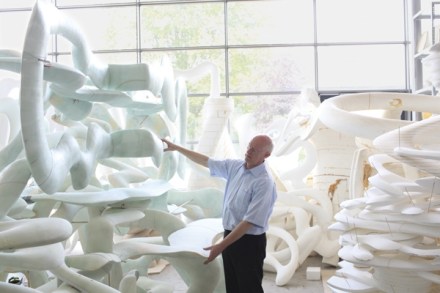Where dreams take shape
The question of what artists actually get up to in their studios has always intrigued the rest of us — that mysterious alchemical process of transforming base materials into gold, or at least into something marketable in the present volatile art world. Today’s studio might as likely be a laptop as laboratory, factory, hangar or garden shed, but is nevertheless an apt prism through which to explore the notion of creativity, and this boldly ambitious volume does just that, interviewing 120 British artists in a freewheeling way about their practice and process, inspiration and ideas. Sanctuary pays tribute to Private View, that inimitable portrait by John Russell, Bryan Robertson and










